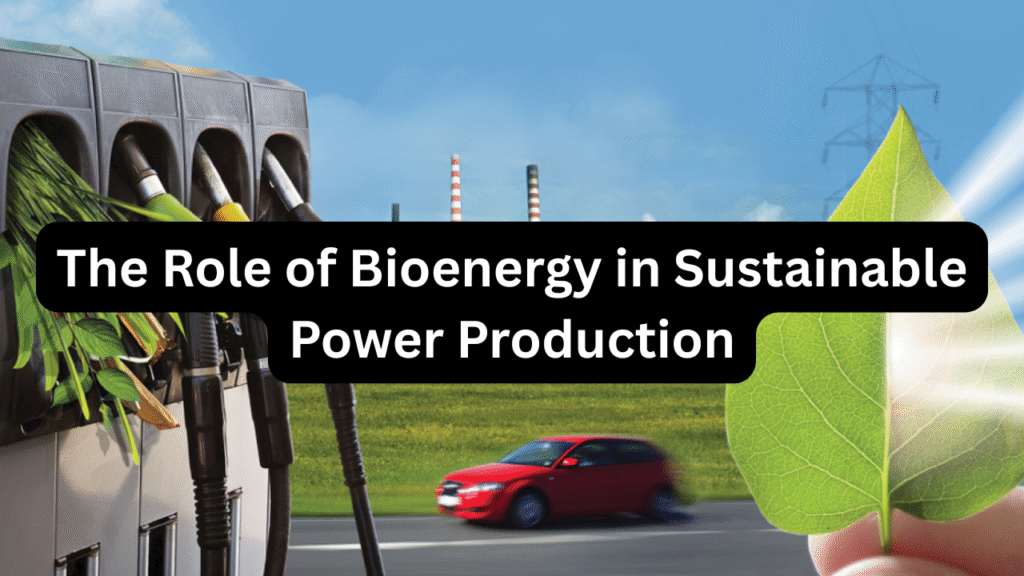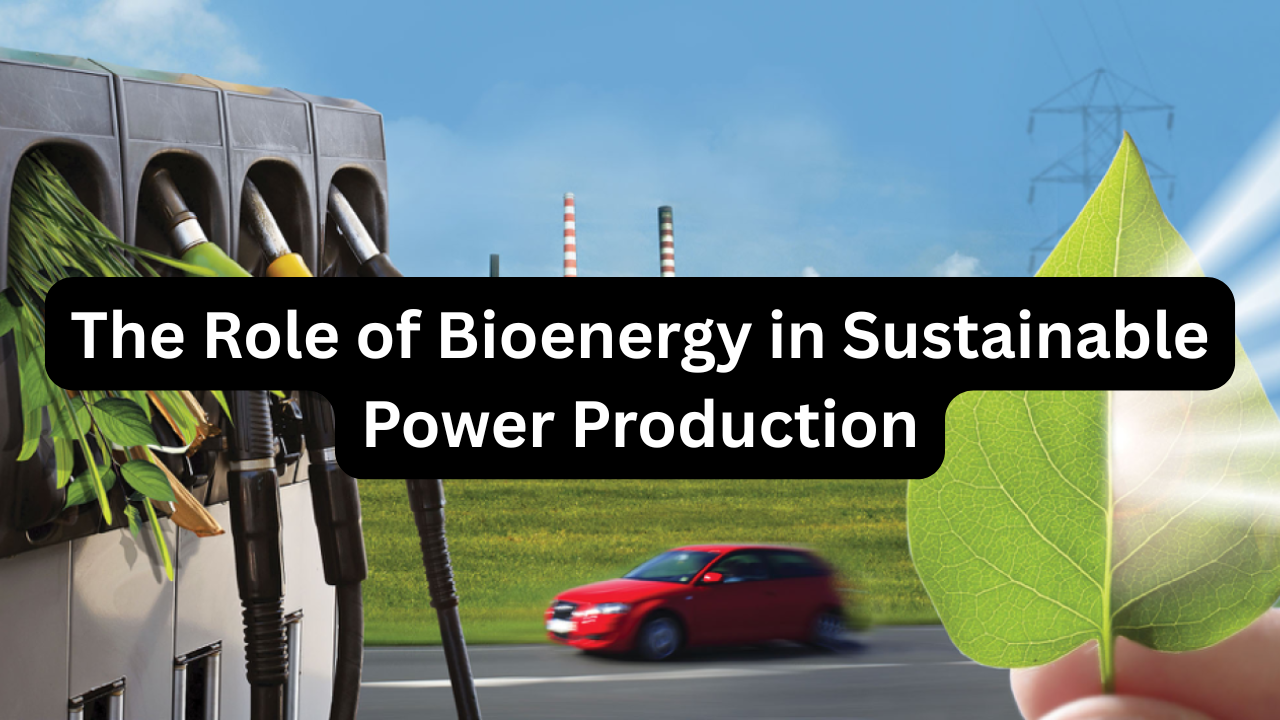
As global energy demand rises and concerns over climate change intensify, bioenergy has emerged as a key component of sustainable power production. Bioenergy is derived from organic materials—such as plant matter, agricultural residues, and waste—and can be converted into electricity, heat, or biofuels. By using renewable biomass resources, bioenergy provides a low-carbon alternative to fossil fuels and supports a circular economy. This article explores the role of bioenergy, its types, benefits, challenges, and implementation strategies for sustainable energy systems.
What Is Bioenergy?
Bioenergy is energy produced from biomass, which includes organic materials like wood, crop residues, algae, and municipal waste. The energy stored in biomass is released through processes such as combustion, gasification, anaerobic digestion, or fermentation.
Forms of Bioenergy:
- Solid Biomass: Wood pellets, crop residues, and forestry waste burned for heat or electricity.
- Biogas: Methane produced from anaerobic digestion of organic waste, used for electricity or heating.
- Biofuels: Ethanol, biodiesel, and other fuels derived from plant materials for transportation.
- Algae-based Energy: Emerging technology producing biofuels from algae cultivation.
How Bioenergy Works
- Collection of Biomass: Organic materials from agriculture, forestry, or waste streams are gathered.
- Processing: Biomass is converted into usable forms through drying, pelletizing, or chemical processing.
- Energy Conversion: Biomass can be combusted directly for heat, converted to gas or liquid fuels, or used in fuel cells for electricity generation.
- Energy Distribution: Produced electricity, heat, or fuel is supplied to households, industries, or transportation networks.
Benefits of Bioenergy
- Renewable and Sustainable: Biomass is continuously replenished through agricultural and forestry activities.
- Carbon Neutral Potential: When sourced sustainably, biomass combustion emits only the carbon dioxide that was absorbed during plant growth.
- Waste Reduction: Converts agricultural, municipal, and industrial waste into usable energy.
- Versatility: Can provide electricity, heating, and transportation fuels.
- Local Economic Growth: Promotes rural development and supports agricultural sectors.
Challenges of Bioenergy
- Resource Availability: Limited supply of sustainable biomass in densely populated or urban areas.
- Land Use Concerns: Large-scale biomass cultivation may compete with food production.
- Emissions: Inefficient combustion can produce particulate matter and other pollutants.
- Technology Costs: Advanced bioenergy technologies like algae-based fuels or gasification require significant investment.
- Storage and Transport: Biomass requires proper storage and transportation to maintain efficiency and prevent degradation.
Types of Bioenergy Technologies
| Technology | Description | Primary Use |
|---|---|---|
| Combustion Boilers | Burn solid biomass to generate heat or steam | Electricity and heating |
| Anaerobic Digesters | Microbes break down organic waste producing biogas | Electricity, heating, and fuel |
| Gasification | Converts biomass into synthetic gas | Power generation and industrial fuel |
| Biofuel Production | Converts crops or waste into ethanol or biodiesel | Transportation |
| Algae Cultivation | Uses algae to produce bio-oil | Future fuels and specialty products |
| Co-firing Systems | Mix biomass with coal in power plants | Reduce fossil fuel use in electricity generation |
Cost Considerations
| Component | Typical Cost (USD) | Lifespan | Notes |
|---|---|---|---|
| Biomass Boiler | $20,000–$100,000 | 15–25 years | Scales with energy needs |
| Anaerobic Digester | $50,000–$500,000 | 15–20 years | Converts waste to electricity and heat |
| Gasification Plant | $200,000–$1,000,000 | 20–30 years | Industrial-scale electricity production |
| Biofuel Refinery | $500,000–$5,000,000 | 25+ years | Produces ethanol, biodiesel, or other fuels |
| Feedstock Procurement | Variable | N/A | Cost depends on local biomass availability |
Implementing Bioenergy in Sustainable Systems
- Resource Assessment: Identify available biomass sources in local agriculture, forestry, and municipal waste.
- Technology Selection: Choose the appropriate conversion technology based on scale, cost, and energy needs.
- Integration: Combine with other renewables like solar or wind for hybrid energy systems.
- Monitoring & Efficiency: Track energy output, emissions, and feedstock use to optimize performance.
- Community Engagement: Work with local stakeholders to ensure sustainability and equitable benefits.
Environmental Impact
Bioenergy contributes to carbon-neutral energy production when sustainably sourced. It reduces reliance on fossil fuels, mitigates waste disposal issues, and supports a circular economy. However, careful planning is necessary to avoid deforestation, land-use conflicts, and air pollution.
Overview Table
| Feature | Description | Benefit to Energy System |
|---|---|---|
| Renewable Source | Uses organic waste and crops | Reduces dependence on fossil fuels |
| Carbon Neutral Potential | Biomass absorbs CO₂ during growth | Minimizes net greenhouse gas emissions |
| Energy Versatility | Provides electricity, heat, and fuels | Multiple applications |
| Waste Management | Converts agricultural and municipal waste | Reduces landfill use |
| Economic Development | Supports rural and agricultural sectors | Job creation and local economy boost |
| Hybrid Integration | Can be combined with solar, wind, and hydro | Enhances grid stability and reliability |
Conclusion
Bioenergy plays a critical role in sustainable power production by providing renewable, versatile, and locally sourced energy. While challenges such as land use, emissions, and technology costs exist, proper planning and sustainable practices can maximize benefits. By integrating bioenergy with other renewable sources, communities can achieve low-carbon, efficient, and resilient energy systems, contributing to global sustainability goals.
3 Quick FAQs
- Is bioenergy truly carbon neutral?
When sourced sustainably, biomass emits only the CO₂ absorbed during plant growth. - Can bioenergy be used in urban areas?
Yes, through biogas from municipal waste and small-scale biomass systems. - What types of energy can bioenergy provide?
Bioenergy can generate electricity, heat, and transportation fuels like ethanol or biodiesel.

